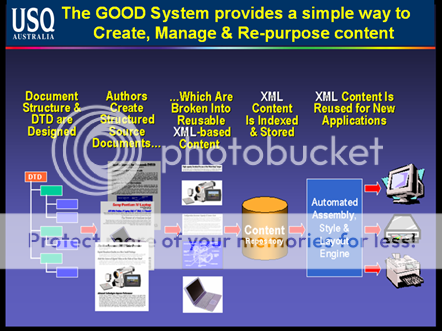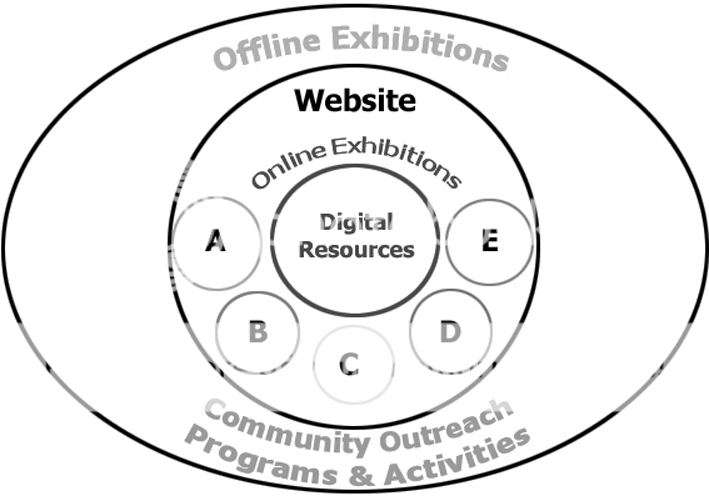If you generate content on your blog or at work, there could be a market for these if re-packaged differently.
We all complain of information overload and never know what to read and what not to read. The problem is rendered acute not so much by the amount of information but the formats these are delivered in. Blogs and websites are fine but they are difficult to navigate. They have all kinds of content, and that too keeps getting pushed down as more comes in every day. It is not always possible to track content daily and you may miss out on important stuff. One also needs to be online to read it all. Bookmarking or mailing pages to oneself is cumbersome too.
Get into e-publishing content that is downloadable on demand, can be stored for offline consumption, is portable across various media and can even be printed. This includes:
E-Magazines: A PDF compilation of content on a given topic.
E-Books: Not all books lend themselves to being published on paper, or being distributed through conventional channels. These books can be as small as ten pages or running into hundreds. Topics could include any that come to mind: programming guides, travelogues, cooking, self help, fiction, non-fiction etc. If you have knowledge on a given subject like, say, fighting spam, you could write a book on it.
Print on Demand: If you have gone ahead and produced a book, there may be cases of customers wanting a hard copy of it. If you print these yourself, you will be straddled with inventories in multiples of a thousand, the minimum print run. This obviously makes little sense unless you are sure you will be able to sell these. Print-on-Demand service providers like Pothi.com (http://pothi.com) in India and Lulu.com (http://lulu.com) in the US can print even one copy at a time for your customers. Of course the pricing varies accordingly but is only a small fraction of what you would pay if you went to a regular printer to print one copy.
Podcasts are audio recordings that can be downloaded and played back on a computer or any audio device like the iPod. Content can be interviews you conduct with people, educational or informative programs, or entertainment or anything that lends itself to being listened to for the desired results.
Videos, like Podcasts, can be created for similar purposes. In addition, they are highly suited where you have to show visuals or when it helps to add faces to voices.
Webinars are more like online events where a people participate from all over the world for a real time discussion or to listen to an expert. These are usually announced in advance enabling people to register and add to their schedule.
“I live in Japan where access to English print materials is very marginal. I have to get it from Amazon.com or pick them up whenever I am travelling abroad. E-magazines are a great and fantastic idea and very beneficial to people like me. As internet has reached across to every one, imagine you could be delivering content to a person as remote as Antartica or North pole and anywhere in between! – Shariff Masood, IT Professional currently posted in Japan
Restructuring existing e-content
WHERE IS THE MONEY?
Many individuals and organizations around the world have made thriving businesses out of content packaged in formats mentioned above. Much of it comes with a price tag, which can vary from a under a dollar equivalent to hundreds or even thousands of dollars. All depending on the nature of the content and target audience. When you sell books through the PoD model, the service provider quotes a price for printing and delivery and your margin can be any mark-up you decide for yourself.
Alternately, e-magazines and some other forms of content are also suited for advertising. Since the recipient is clearly identifiable, and circulation accounted for, advertisers can pay per view or download and thus maximize return on investment.
GENERATING CONTENT
Unless there is compelling content, it would be almost impossible to sell the same. There can be many ways to generate the same including:
You: If you blog about a given topic, or generate content as a part of your work, you could have enough to publish. If you a techie support, you might be writing manuals for customers and support staff. This could be adapted to be sold as books. Or as a management expert, you may have case studies to share. A travel blogger would have enough pictures and other features. A trainer could easily create content in most forms mentioned above.
Contributors: You could invite people to write for you just like newspapers and magazines invite freelancers. Pay them if that is what they want. Or work out any other incentives like splitting revenues or getting them some publicity.
Syndicate: Source content from syndication agencies or other blogs and websites – with permission and any payment they may seek.
The same content can be used in different ways
ADVANTAGES
Is e-content the future? Yes, it is. Many enterprising people have proven so already – it is time you did so too. The reasons for its bright future lies in:
One time effort, recurring returns: Such content requires only a one-time effort and investment and no further cost for every download. The returns can keep coming for days or even years depending on the life of the content.
Low Cost: One does not require to spend a lot of money to create this content. Desktop publishing tools including Office and some basic editing software can do the trick. And home video cameras and Dictaphones are enough to create videos and podcasts.
On Demand: The content is available on demand, 24x7. You could be sleeping once the content is uploaded on the servers and wake up to find the cash box full.
Address Niche Markets: This is ideally suited to go as niche as one wants to address specific markets not possible through conventional media.
Pricing: Can be totally flexible as there are no production costs after the initial investment, if any. A newspaper or magazine needs to have a spend on paper, printing and delivery for every copy sold – but not in this case.
Updates: It is easy to come out with updates and corrections as frequently as one wants. One can even offer new versions to paying customers free of cost up to a certain time of, say, six months.
Customisation: With low production costs, you can even generate custom content for your various customers.
Global Market: You need not be limited to any limited geographies. The world is your market potentially.
Distribution is not a problem, being electronic in nature. The biggest challenge for traditional media is finding space on shelves or getting frequencies allocated for television or radio content. No such problem here.
Viral: It is easy for word to spread easily through word of mouth and email and more and more people coming to download stuff when they hear of it.
Attract Traffic to your blogs and websites. It is easy for someone to be reading your content on the computer and just click on any links provided and land on your sites.
Public Relations and Brand Building: As more people consume your content, the bigger a brand you build for yourself or for your organization.
“I already subscribe to few e-magazines through Zinio.com (http://zinio.com) and I wish the rest of my favorite magazines were available electronically as well. I am not comfortable with the PDF format though. I think e-magazines should be distributed in Zinio type software which keep the experience close to reading the paper magazine.
I disagree with these e-magazines being free as a lot of effort that goes in to every edition. However, the reduced cost of logistics and printing on paper can be passed on the e-reader by discounting the e-magazines.” – Monika Dewagan, Software Engineer, Keypoint Technologies, India





0 comments:
Post a Comment